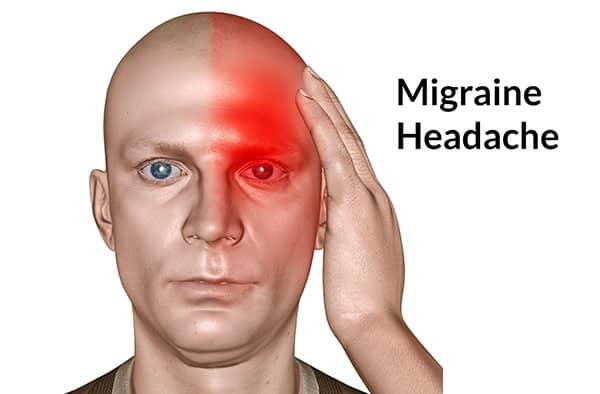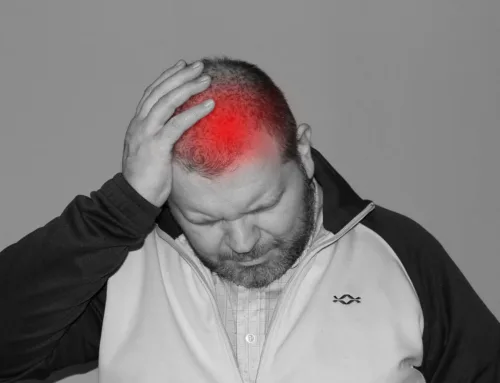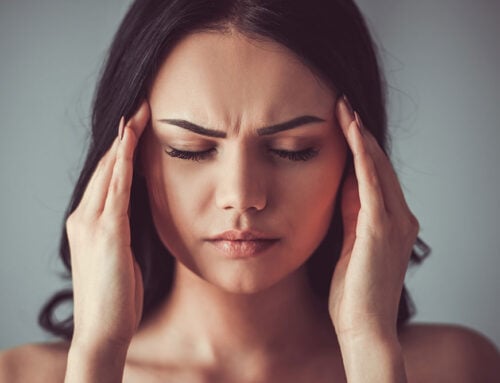When there is pressure or pain in your head, it can be difficult to tell whether you are experiencing a typical headache or a migraine. Differentiating a migraine headache from a traditional headache, and vice versa is essential. It can mean faster relief through better treatments. It can also help prevent future headaches from occurring in the first place. So, how can you tell the difference between a typical headache and a migraine?
WHAT IS A HEADACHE?
Headaches are unpleasant pains in your head that can cause pressure and ache. The pain can range from mild to severe, and they usually occur on both sides of your head. Some specific areas where headaches can occur include the forehead, temples, and back of the neck. A headache can last anywhere from 30 minutes to a week.
TYPES OF HEADACHE
1. A tension headache: It is a widespread type of a headache. The triggers for this headache type include stress, muscle strain, and anxiety.
2. Cluster headaches: Cluster headaches are severely painful headaches that occur on one side of the head and come in clusters. It means that you experience cycles of headache attacks, followed by headache-free periods.
3. Sinus headaches: Often confused with migraines, sinus headaches co-occur with sinus infection symptoms like fever, stuffy nose, cough, congestion, and facial pressure.
4. Chiari headaches are caused by a congenital disability known as a Chiari malformation, which causes the skull to push against parts of the brain, often causing pain in the back of the head.
5. Thunderclap headaches is a very severe headache that develops in 60 seconds or less. It could be a symptom of a subarachnoid haemorrhage, a critical medical condition that requires immediate medical attention. It may also be caused by an aneurysm, stroke, or another injury. Call 911 immediately if you experience a headache of this kind.
MIGRAINES
WHAT IS A MIGRAINE?
Migraine is a neurological disorder, characterized by intense or severe pain and headache lasting at least four hours to several days. Migraine is often accompanied with other symptoms in addition to head pain; it tends to worsen by and interfere with physical activity.
Migraine headaches will typically affect only one side of the head. However, it is possible to affect both sides of the head (1). Symptoms associated with a migraine headache include but not limited to:
- Nausea
- Pain behind one eye or ear
- Pain in the temples
- Seeing spots or flashing lights
- Sensitivity to light and sound
- Temporary vision loss
- vomiting
Migraine pain can be moderate to severe. Some people experience migraines so severe they seek medical care at an emergency room. Other differences include the pain’s quality: A migraine headache will cause intense pain that may be throbbing and will make performing daily tasks very difficult.
According to Statistic Canada, an estimated 8.3% of Canadians (2.7 million) experience migraine headaches. However, due to high number of people who do not seek professional help, this number is likely underestimated.
MIGRAINE TYPES
A migraine is categorized into two majorly known types, but it is not limited to only the two major types which are:
1. A migraine with Aura.
2. A migraine without Aura.
An “aura” refers to sensations a person experiences before a migraine attack, which can occur anywhere from 10 to 30 minutes before an attack this is known as the “prodrome” phase, these subtler signs can include:
- constipation
- depression
- frequent yawning
- irritability
- neck stiffness
- unusual food cravings
Migraine with Aura: This type of a migraine is accompanied with either mild or server pounding head pain accompanied by headache. This migraine type occurs without a sign and is normally felt on one side of the head. Symptoms include:
- feeling less mentally alert or having trouble thinking
- seeing flashing lights or unusual lines
- feeling tingling or numbness in the face or hands
- having an unusual sense of smell, taste, or touch
When this migraine type occurs in patients, it usually persists for 4 hours up to 72 hours.
Migraine without Aura: Is a headache attack lasting 4-72 hours. This migraine type is normally felt on one side of the head with moderate or severe pulsating intensity. Symptons includes:
- At least five mild to severe migraine headache attacks
- Headache attacks lasting 4-72 hr
- Headache has at least two of the following four characteristics:
- Felt on one side of the head
- Pulsating/pounding head pain
- Moderate or severe head pain
- Symptoms intensify with physical activity (eg, walking or climbing stairs)
Migraine with Brainstem Aura: Commonaly disturbs youngsters and teenagers. It comprises a migraine with aura indications that emanates from the brainstem, but it is not accompanied by fatigue. Aura consisting of visual, sensory and/or language symptoms for a period of time. At least two of the following four charateristics:
- at least one aura symptom spreads gradually over ?5 min, and/or two or more symptoms occur in succession
- each individual aura symptom lasts 5-60 min2
- at least one aura symptom is unilateral3
- the aura is accompanied, or followed within 60 min, by headache
Chronic migraine: A condition characterized by the recurrent throbbing headache on at least 15 days per month that commonly affects one side of the head and is often accompanied by nausea vision issues.
MIGRAINE TRIGGERS
People who experience migraines report various factors that are associated with them. These are called migraine triggers. Adjustments in atmospheric density have been termed as causing migraine headaches.
It is not all patients living with a migraine that feel a headache when being put in the dangers of these triggers. The migraine factors that can cause migraine trigger may include:
i. Emotional anxiety
ii. Contraceptives
iii. Alcohol
iv. Hormonal changes
v. Menopause
MIGRAINE RISK FACTORS
Discoveries have shown that about 25 percent of persons go through the attack of a migraine headache at one or two points in their lifetime. Nearly all the patients living with a migraine are female. It is has been anticipated that after teens, the proportion of female to male patients who are living with a migraine is about 3 percent to 1 percent. There appears to be a hereditary tendency to suffer from a migraine because there is frequently a convincing family history of patients living with a migraine.
TREATING HEADACHES
Over-the-counter treatments
Fortunately, most tension headaches will go away with over-the-counter treatments. These include:
• Acetaminophen
• Aspirin
• Ibuprofen
Relaxation techniques
Because most headaches are stress-induced, taking steps to reduce stress can help relieve headache pain and reduce the risk for future headaches. These include:
• Heat therapy, such as applying warm compresses or taking a warm shower
• Massage
• Meditation
• Neck stretching
• Relaxation exercises
TREATING MIGRAINES
Prevention tips
Prevention is often the best treatment for migraine headaches. Examples of preventive methods your doctor may prescribe are:
• changes to your diet, such as eliminating foods and substances known to cause headaches, like alcohol and caffeine
• prescription medications, such as antidepressants, blood pressure-lowering medicines, or antiepileptic medications
• steps to reduce stress
• Nerve Blocks
• Onabotulinum toxin A (Botox, registered trademark name by Allergan)
Medications
People who have migraines less frequently may benefit from taking medications known to reduce migraines quickly. Examples of these medicines include:
• Anti-nausea medicines, such as promethazine (Phenergan), chlorpromazine (Thorazine), or prochlorperazine (Compazine)
• Mild to moderate pain relievers, such as acetaminophen, or nonsteroidal anti-inflammatory drugs (NSAIDs), such as aspirin, naproxen sodium, or ibuprofen
• triptans, such as almotriptan (Axert), rizatriptan (Maxalt), or sumatriptan (Alsuma, Imitrex, and Zecuity)
If a person takes migraine headache medications more than ten days a month, this could cause an effect known as rebound headaches. This practice will worsen headaches instead of helping them feel better.
Identify and treat early
Headaches can range from being a mild inconvenience to being severe and debilitating. Identifying and addressing headaches as soon as possible can help a patient living with a migraine to engage in preventive treatments. This preventive treatment minimizes the chances of another headache. Knowing the difference between a headache and migraine can be tricky. Hence, it is essential that, as a patient living with a migraine, you should know when to visit your doctor. Also, pay particular attention to the time before a headache starts for signs of an aura and tell your doctor.
Resources:
The International Headache Society. https://www.ichd-3.org/1-migraine/1-2-migraine-with-aura/1-2-2-migraine-with-brainstem-aura/













